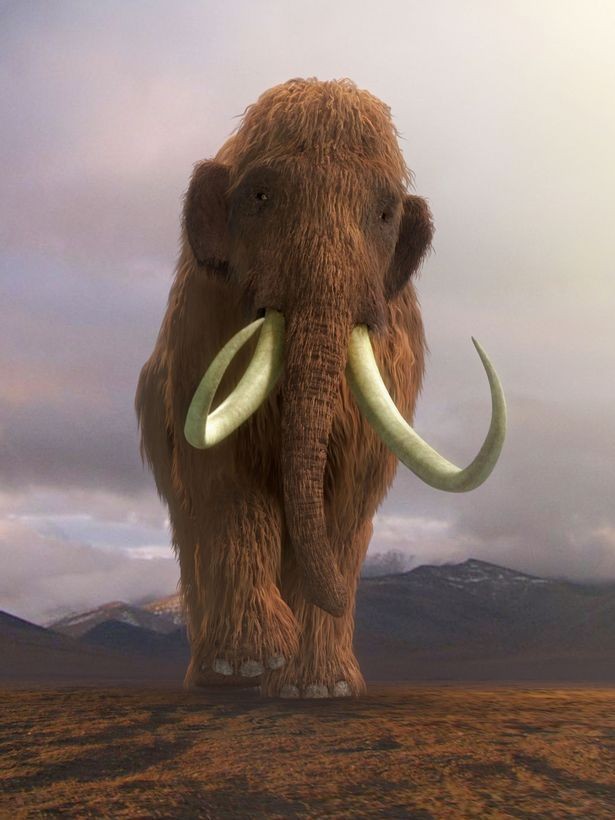woolly rhinoceros
The woolly rhinoceros is an extinct species of rhinoceros that was common throughout Europe and northern Asia during the Pleistocene epoch and survived until the end of the last glacial period. The genus name Coelodonta means "cavity tooth". The woolly rhinoceros was a member of the Pleistocene megafauna.
Appearance
Woolly rhinoceros had thick, long fur, small ears, short, thick legs, and a stocky body, the woolly rhinoceros was well adapted to its cold environment. An adult woolly rhinoceros was typically around 3 to 3.8 metres (9.8 to 12.5 ft) in length, with an estimated weight of around 1,800–2,700 kg (4,000–6,000 lb).
The woolly rhinoceros grow to be 2 m (6.6 ft) tall.
Wolly rhinoceros is slightly larger than, today’s white rhinoceros ( larges living rhinoceros in the world).
Two horns on the skull were made of keratin, the horn being 61 cm (24 in) in length, with a smaller horn between its eyes. The woolly rhinoceros used its horns for defensive purposes and to attract mates.
Study and discovery
The appearance of woolly rhinos is known from mummified individuals from Siberia as well as cave paintings. Cave paintings suggest a wide dark band between the front and hind legs, but it is not fully accepted as a woolly rhino.
A completely preserved specimen (missing only the fur and hooves) was discovered in a tar pit in Starunia, Poland. The specimen, an adult female, is now on display in the Polish Academy of Sciences' Museum of Natural History in Kraków. Several frozen specimens have also been found in Siberia, the latest in 2015. A study of 40,000- to 70,000-year-old DNA samples showed its closest extant relative is the Sumatran rhinoceros.
The woolly rhinoceros co-existed with woolly mammoths and several other extinct larger mammals of the Pleistocene megafauna.
In 2011, a 3.6-million-year-old woolly rhinoceros fossil, the oldest known, was discovered on the cold Tibetan Plateau, suggesting that it existed there during a period of general climate warmth around the earth. Dental characteristics that it had grazing feeding preference. Recent radiocarbon dating indicates that the population of woolly rhino survived as recently as 8,000 BC in western Siberia. However, the accuracy of this date is uncertain.
Cause of extinction
Some of the most accepted theories for the cause of the extinctions are climate change, Human hunting, the hyper-disease. The scientist can not mention the exact reason and the exact period of the extinction of the woolly rhinoceros.




0 Comments